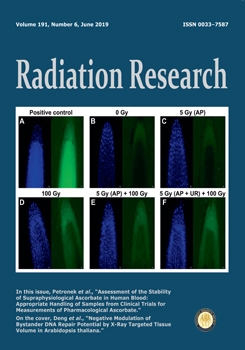Variation in cellular characteristics may determine tumor response and, consequently, patient survival in radiation therapy. However, patient-specific prediction of cellular radiation response is currently unavailable for treatment planning. Thus, the importance of developing a novel approach based on clinically accessible parameters prior to treatment (e.g., by biopsy) is high. The goal of this study was to predict in vitro cancer cell survival through the p53mutation status and the number of chromosomes (NoC). To predict cell survival, we modified a mechanistic radiation response model incorporating DNA repair and cell death, originally designed for normal human cells. Cell-specific parameters of 24 cell lines originating from two laboratories (OncoRay, Dresden, Germany and HIMAC, Chiba, Japan) were considered for modeling. In a first step, we obtained estimates of the only unknown model input parameter genome size (GS) by fitting cell survival simulations onto experimental data. We then analyzed measured and published input model parameters (NoC, p53-mutation status and cell-cycle distribution) to assess their impact on measured and simulated parameters (modeled GS, and measured α, β, SF2 and γ-H2AX). The resulting data suggested a linear correlation between NoC and modeled GS (R2 > 0.93) allowing for estimating GS based on NoC. Applying the estimated GS resulted in predicted cell survival that matched measured data mostly within the experimental uncertainty. The measured radiobiological value β increased quadratically with the cell's modeled GS irrespective of other cell-specific parameters. The measured α and SF2 split into two groups, depending on the cells' p53-mutation status, both linearly increasing and decreasing, respectively, with modeled GS. Model predictions of foci numbers were, on average, in agreement with published γ-H2AX measurement data. In conclusion, knowledge of clinically accessible parameters (p53-mutation status and NoC) may support patient stratification in radiotherapy based on cell-specific survival prediction testable in prospective clinical trials.
How to translate text using browser tools
22 April 2019
Predicting In Vitro Cancer Cell Survival Based on Measurable Cell Characteristics
Hakan Oesten,
Cläre von Neubeck,
Aline Jakob,
Wolfgang Enghardt,
Mechthild Krause,
Stephen J. McMahon,
Clemens Grassberger,
Harald Paganetti,
Armin Lühr
ACCESS THE FULL ARTICLE

Radiation Research
Vol. 191 • No. 6
June 2019
Vol. 191 • No. 6
June 2019




